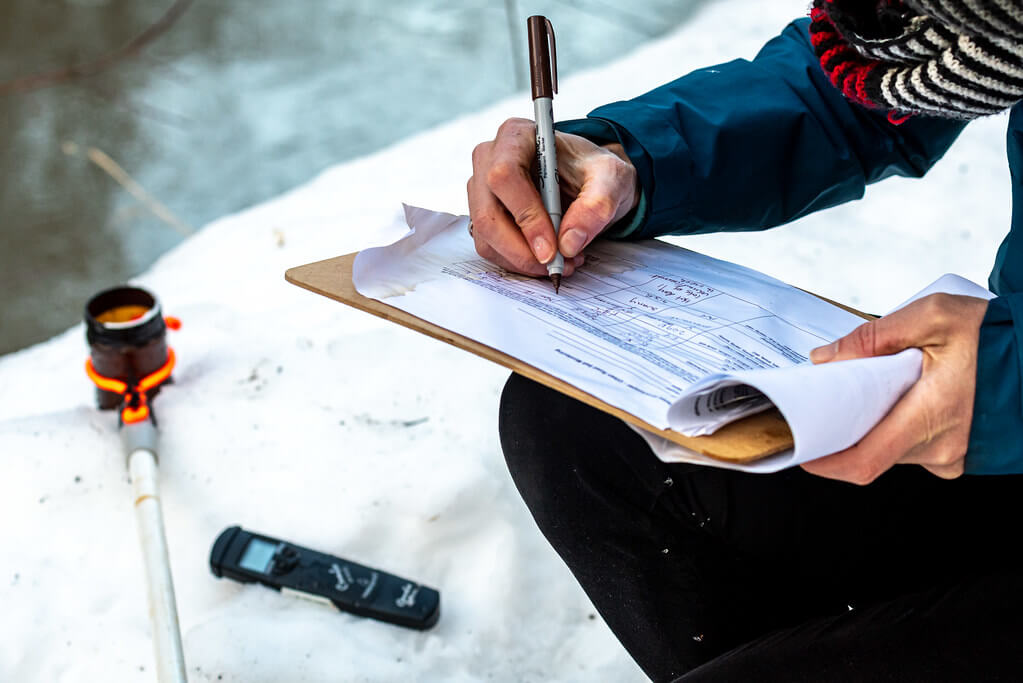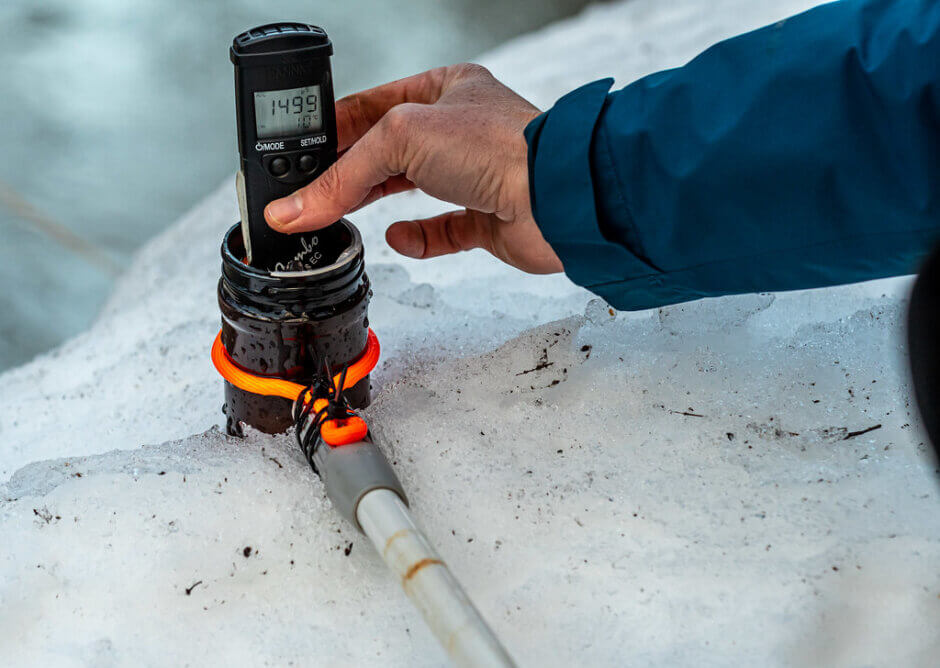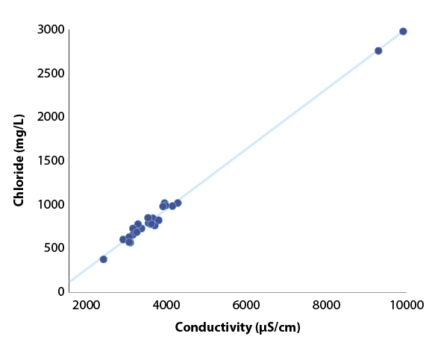Posted: January 18, 2022
The 2021-2022 Road Salt Program at Ottawa Riverkeeper

As we greet 2022, we are surely in the heart of winter in the National Capital Region (NCR), as we see toques all around, winter sports are going strong, and snowplows are becoming an everyday sight. Monitoring the effects of road salts on our aquatic ecosystems has been a major undertaking at Ottawa Riverkeeper in the past few years, and this winter we are continuing our work while expanding the program throughout the city.
Road Salt (most commonly composed of sodium chloride) is the predominant de-icing agent on roads in our watershed. When it snows or rains, it dissolves in water and separates into sodium and chloride ions. In the city, this water enters stormwater pipes and is ejected into local streams and creeks that flow into the Ottawa River. Chloride, the more concerning of the salt’s parts, can cause lasting damage to ecosystems because it cannot be easily removed from the environment.
To understand the impact of road salt on aquatic environments, we use the Canadian Government’s established chloride concentration thresholds. These thresholds determine when aquatic organisms like zooplankton, macroinvertebrates, amphibians, and even fish can suffer detrimental effects ranging from slowed growth all the way to death. Chloride concentrations above 120mg/L are chronically toxic to the ecosystem, meaning prolonged, days-long, exposure to these concentrations can harm aquatic organisms. Whereas, chloride concentrations above 640mg/L are acutely toxic, meaning that when concentrations exceed this threshold even for a short period of time, there are immediate repercussions on local organisms.
What we have learned
With the assistance of dedicated volunteers, Ottawa Riverkeeper has been collecting data since 2019 to understand how much chloride is entering local waterways, and comparing these values to the thresholds for chloride toxicity. Previously reported results from this program have highlighted the serious ecological threats road salts pose to aquatic ecosystems; our data suggests that chloride concentrations regularly exceed those leading to chronic toxicity in most aquatic systems in the NCR, and all sites experience at least one acute toxicity event each winter. We are continuing our efforts to monitor chloride concentrations in local waterways by monitoring sites in Ottawa and Gatineau that have historically troubling concentrations, and by monitoring previously understudied sites in the region.

What’s new this year!
To proactively manage the practice of oversalting, this year we are working with local property managers and snow clearing companies to provide professional training on appropriate salt use. The Smart About Salt council offers seminars that discuss tangible mechanisms by which snow and ice removal operations can maintain safety while minimizing their salt use. Trainees receive information about the effectiveness of road salt in different weather conditions and temperatures, and are presented with information about equipment calibration and distribution methods that ensure safety without oversalting.
Our monitoring program is incorporating new sites across the region so that we can continue to highlight sites of concern. Community scientists are collecting information and water samples from streams in Orleans to monitor the effectiveness of the Smart About Salt training on streams near large parking lots and other commercial sites.
Results from Pinecrest creek:
Alongside new sites, we are also continuing to monitor historically salty sites like Pinecrest Creek & Graham Creek to highlight their troubling concentrations and to also monitor any long-term changes based on an increasing awareness of the negative effects of road salts on aquatic systems.
While we are working with local partners to limit an overuse of road salts, there are very real opportunities for community members to take action to protect their environment! If you see an instance of road salts being used in excess, consider politely sharing some of our resources with the distributor. We can all work together to be #saltheroes and minimize the risks to local rivers!
Test your knowledge about road salt use
Applying road salts to roads, parking lots, sidewalks, and driveways is an important way to protect people from slipping and falling during the winter season. Unfortunately, we often receive reports and images of ‘oversalting’, instances where excessive salt is being distributed. You might be familiar with oversalting if you’ve ever seen a pile of salt on a sidewalk or if you’ve walked across a parking lot that was crunchy with salt granules. Salting in this fashion does not improve the safety of streets or walkways, but it can lead to increased runoff and can also damage infrastructure like concrete and metallic structures.
Ottawa Riverkeeper has produced an informative quiz describing how much salt is required to safely de-ice surfaces.




I live on the Rideau River just south of the Hunt Club bridge and would like to volunteer to expand your study area. how can I help?
Hi Norma, great question. You can reach out to our science team by emailing CBM@ottawariverkeeper.ca. Thank you so much for your interest and offer of help!
I used to run a combo (Salter, plow and wing) as an employee for the City of Ottawa. Time after time I see salt being applied incorrectly (According to how I was trained) and unnecessarily.
I am now on permanent disability.
I don’t know if you’d be interested in the information I can provide.